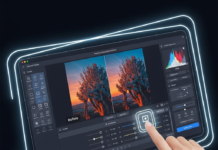Last Updated on December 18, 2024 by Rida Gul
Many of us have brilliant ideas for mobile apps that might attract consumers, evolve into profitable start-ups, or just become helpful tools for businesses.
One issue exists, though: very few projects are really made a reality. That is the reason it is so crucial. Like any other convoluted task, creating a mobile app involves conscientious planning and attention to detail.
Even if you’re not an masterly in the industry, you may restful get exceptional outcomes if you know absolutely what has to be done and in what progression. Building a mobile app specifies you to go through a number of chapters in order to assemble a successful result.
A On Demand App Developer is an expert in constructing mobile apps for services such as home solutions, ride-sharing, and food delivery that are precise to the on-demand economy.
Let’s examine each of them in more detail.
Table of Contents
Step 1: Ideas are the Foundation of Everything
Everything, including training, enjoyment, assisting others, and even global change, starts with an idea. Your interests and pastimes are typically the source of the idea.
The primary prerequisites are that your software must solve a genuine need and be desired by someone other than yourself.
Step 2: Investigate Your Target Market and Rivals
Clarifying the purpose and target audience of the mobile application is a crucial second stage in the development process. Who is your product’s intended market? With it, what tasks will users accomplish? How do you persuade people to choose your product over rivals?
When it comes to business, there are several ways to respond to the question “Why”:
the ambition to launch a successful start-up in a certain industry; develop an app to streamline and manage the commercial operations of the organization;
use the mobile market as a means of drawing customers and boosting revenue;
The urge to outpace or stay on par with competition.
You shouldn’t be concerned with functionality, design, or other specifics at this point. Just concentrate on the issue your app has to resolve and the benefits it offers to entice customers to use it.
You can get so enthralled that you forget everything about market research. Carry out market research. What happens if another software already performs the same function as yours? It’s quite probable that someone else thought of this brilliant concept before you did, and they were able to deliver the final product first.
In actuality, competition is beneficial. In addition, the presence of rivals in a niche indicates the presence of capital and growth potential.
Rather of fretting that you are beginning too late, consider the advantages in the event that everything works out well. Actually, you may research the items created by your rivals, ascertain the features they have, and create an app that does the following:
accomplishes the same thing quicker or better; provides extra options not found in items from your rivals.
Research on markets and competitive environments is always important.
Step 3: Assess Functionality & Features
A list of essential features is essential whether you plan to construct the mobile app yourself or pay a development company to accomplish it for you. Additionally, organizing them in a written form would be preferable.
The following choices, for instance, may be included in this functions list.:
Authorization via social networks; enhanced user profiles; synchronization of cloud server data; integration of mobile payment systems; user activity statistics; position finding (geolocation); implementation of push notifications; internal chat, calendar, etc.
A well-defined list of essential activities may significantly streamline several critical areas such as technology selection, workflow planning, project assessment, and more.
Engaging Hire Dedicated Mobile App Developers means hiring experts whose whole concern is on developing and managing mobile apps that are custom-made to meet your hardship. These committed developers are skilled in a spacious range of programming languages, frameworks, and platforms, so you can be sure that your business tasks will be met via the creation of feature-rich, high-quality applications. Businesses may gain from specialized attention, prompt delivery, and continuing support to guarantee the success of their mobile initiatives by engaging specialized mobile app developers.
Step 4: Select the Best Platform for Your Application
Numerous considerations should be considered while choosing a mobile platform, and the same is true for the development methodology. Actually, if you have a big budget or don’t intend to use the app on any other platforms, you may make native applications. If not, you can leverage cross-platform technologies, like Xamarin, which lower costs and speed up product development, however these applications can never fully outperform native technology in certain areas.
It is challenging to cover every significant facet of this problem in a single paragraph. Therefore, we produced a different piece on this subject that we hope you would read:
Native App vs. Cross-Platform Mobile App What Are the Developmental Differences and Which Is Better?
Theoretically, the platform and development strategy should be chosen depending on the specific project’s time and financial restrictions.
By 2026, there will be around 7.5 billion smartphone users worldwide, up from the current estimated 3.2 billion users.
Step 5: Create an Application Diagram, Model, and Illustration
Prototyping is when ideas begin to take shape. Considerations include navigation, how the program interacts with its components, how it looks on various devices, and other crucial details.
The client must then authorize the creation of five to ten basic app displays. With the prototype, developers can demonstrate exactly how the product will seem and work, rather than only visualizing it from a technical description.
The process of creating a wireframe based on the ready pieces may be accelerated greatly by using one of the many available tools.
You may begin sketching the complete app design in detail, beginning with the first screen and ending with the last, after you have decided on the features and the details of how they will be implemented. All of these details will be shown on the layout.
Utilize the finest tools for wireframing, UI prototyping, and mockups to expedite the process of creating an app.
Step 6: Produce Material for Your Mobile App
Should your application include text, graphics, audio, and video, you will need to have everything ready ahead of time. Such labor is often delegated to specialize outside specialists (such copywriters and designers).
However, for some problems, you may need to consult professionals. For instance, educators and child psychologists would be excellent counselors when it comes developing kid-friendly applications.
Step 7: Get Your Mobile Application Developed
Should you possess the ability to create software on your own, this post will function as a roadmap for you, assisting you in organizing every step. There are a number of different solutions available for developing a mobile application if you are not a software developer, do not have the time, or there are just too many tasks to do.
One of these choices may be used to develop the application:
- Gaining knowledge about creating and developing apps
- With an app builder, make a mobile application
- Employ independent contractors
- Join forces with a programmer
- Recruit a group that develops software.
Outsourcing software development is thus a better option. It is advised that you peruse the blog posts about the finest methods for accomplishing offshore software development as well as the justifications for outsourcing mobile app development to Linkitsoft.
Having the ability to engage more experienced developers at a substantially cheaper cost than in the US and Western Europe is one of the main benefits of this method.
A master company that specializes in developing essential mobile apps for companies and corporations is known as a App Development Agency.
Step 8: Testing and Quality Assurance
To make sure that every software feature included in the technical assignment is used appropriately, this step is required. A QA specialist tests the app’s functionality across a range of devices and circumstances.
Testing permits decision-making on product finalization, weak point removal, and more optimization prior to release, in addition to correcting any faults. All of this raises the likelihood that your product will be well received by the intended market.
Step 9: Integration of Analytical Tools
You may learn more about your app’s user base and their interactions by using specialized analytics tools. With this knowledge, you will be able to come up with ideas on how to make the product better and develop a suitable marketing plan to help it be noticed by customers.
The following are some of the most well-liked and effective mobile analytics platforms:
Mobile Apps using Google Analytics
Mixpanel
With the help of Flurry App Annie’s user behavior analytics data, you can better understand the problems that users of your mobile app face and develop strategies to keep them longer and boost conversion rates.
Step 10: Submit Your App to Google Play and the App Store
Now that you’ve acquired this stage, we’d like to applaud you. Now that your concept has been made available, all you need to do is spread the word about it. Your software must be added to Google Play or the software Store, or sometimes to both at once.
The development team you hired should be given the authority to carry out this task. It would be redundant to include every step required to add the app to the services that are listed here since that process is worthy of its own post.
Step 11: Upkeep, Assistance, and Updates
If you want to produce a genuinely excellent product, you must realize that developing a mobile app is a process for which it is impossible to set a deadline. You won’t fully grasp all of its advantages and disadvantages until it is introduced and you get input from actual users. In addition, they can be entirely unfamiliar to you.
When upgrading the app, you may build a process chart to add new features based on user behavior analysis, feedback, and other data.
After the first launch, mistakes and errors are unavoidable; but, by gathering and evaluating the relevant facts in the future, you might create a really exceptional product.
In brief
When developing mobile apps, organizational problems rather than technological ones are often the biggest obstacles to a project’s successful conclusion. Even seasoned developers may produce unsatisfactory work if the methods are disorganized.
Do you have an visualization for a mobile app but are doubtful of your expertise and expertise to build it? You may always get in touch with us in this circumstances, and we’ll help you out. With years of successful development expertise under their belt, the Linkitsoft, team is prepared to fulfill any and all of your dreams!















